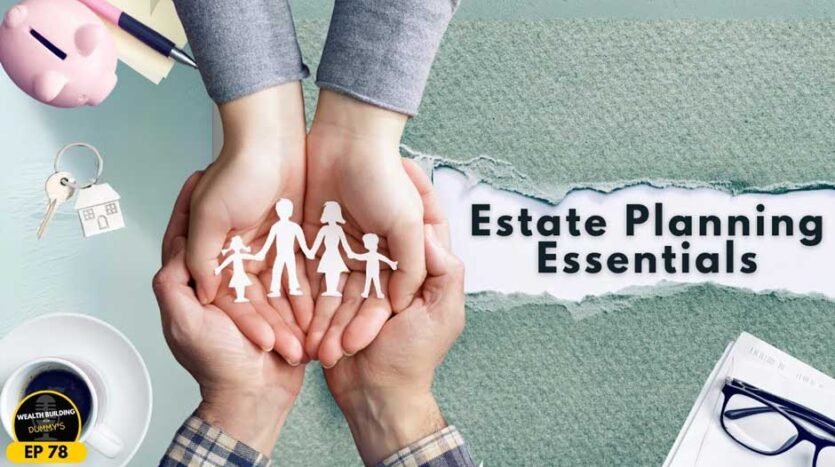How to Set Up a Complete Estate Plan Online: Wills and Trusts Explained?
Because digital tools can now handle legal questions, you don’t have to spend hours in an attorney’s office to plan your estate. Now, people can take care of their future, keep their loved ones safe and see that their desires are respected, all without leaving home. This guide explains how to make an estate plan that can endure over time and gives you useful steps to guide you.
The Digital Revolution in Estate Planning
Now, you can avoid high fees and time-consuming paper procedures. With online services, estate planning has become available, reasonably priced and easy for everyone to use. These tools direct users through the process of making legally approved documents like a will, trust or healthcare directive in less than an hour and with costs that are usually much lower than paying a lawyer. For example, setting up a basic will costs as little as 99 and writing a trust to avoid probate usually costs under 400.
Online services are flexible enough for parents making guardianship arrangements, people managing property and those looking ahead to medical care. You can normally make unlimited changes on most platforms, so your plan can change as your situation does, either by marriage, birth or buying more things.
Core Components of an Online Estate Plan
A strong estate plan covers more than settling your assets—it safeguards your family’s overall future. Here’s what to prioritize:
-
Last Will and Testament
Your will serves as the cornerstone of your estate plan. It allows you to:
- Designate beneficiariesfor assets like homes, savings, and heirlooms.
- Appoint guardiansfor minor children or dependents.
- Name an executorto manage estate distribution.
If you don’t have a will, state law tells the court who will receive your property and this may skip over your preferred close friends or gifts to charities. Doing this online is simpler since you get to answer step-by-step questions and won’t miss any important details.
-
Revocable Living Trust
A trust complements a will by bypassing probate—the lengthy court process that validates wills. Benefits include:
- Privacy: Unlike wills, trusts remain confidential.
- Control: You can specify conditions for asset distribution (e.g., releasing funds when a child turns 25).
- Incapacity planning: Trustees manage assets if you’re unable to do so.
Setting up a trust online involves transferring ownership of assets (e.g., real estate, bank accounts) into the trust, a process streamlined by digital tools that generate deeds and retitling instructions.
-
Financial and Medical Directives
- Durable Power of Attorney (POA): If you’re unable to handle your finances, this person steps in to take care of them.
- Advance Healthcare Directive: Explains what kinds of medical treatment are desired and names a healthcare proxy.
- HIPAA Authorization: Grants allow family members to see medical records when there is an emergency.
These documents ensure your voice is heard even when you can’t speak for yourself.
Step-by-Step Guide to Building Your Plan Online
Step 1: Inventory Assets and Liabilities
Write down all of your properties, accounts, investments and items, along with any outstanding debt you may have. When your instructions are clear, everything is included in your will or trust.
Pro Tip: Use spreadsheets or digital templates provided by platforms to organize details efficiently.
Step 2: Choose Your Tools
Most online services offer tiered plans:
- Basic Wills: Ideal for simple estates.
- Trust Packages: Suited for avoiding probate or managing complex assets.
- Comprehensive Bundles: Include POAs, healthcare directives, and pet trusts.
Select a plan aligning with your needs. For instance, parents might prioritize guardianship clauses, while business owners may require detailed trust provisions.
Step 3: Draft and Customize Documents
Platforms use intuitive Q&A formats to gather information. For example:
- Beneficiaries: Specify who receives what, including contingent heirs.
- Guardianship: Name backups in case your first choice is unavailable.
- Funeral Wishes: Outline preferences for ceremonies or organ donations.
Step 4: Legalize Your Plan
To ensure validity:
- Sign with Witnesses: Most states require two disinterested witnesses.
- Notarization: Some documents, like POAs, need notarized signatures.
- Secure Storage: Store originals in fireproof safes or digital vaults, and share copies with executors.
Avoiding Common Pitfalls
Even with online ease, missteps can derail your plan:
- Outdated Beneficiaries: Retirement accounts and life insurance policies bypass wills. Regularly update these designations to reflect current relationships.
- Unfunded Trusts: A trust without transferred assets is ineffective. Use platform-generated checklists to retitle properties and accounts.
- Ignoring State Laws: Requirements for witnesses or notarization vary. Choose platforms that customize documents to your state’s regulations.
When to Consult a Professional
While online tools excel for straightforward cases, seek legal advice if:
- You own international assets or a business.
- Your estate exceeds federal tax exemptions ($13.61 million in 2024).
- You anticipate family disputes or have beneficiaries with special needs.
Hybrid approaches—using online tools for drafts and attorneys for reviews—offer cost-effective solutions for complex scenarios.
The Peace of Mind Dividend
Beyond legal compliance, estate planning fosters emotional security. Imagine:
- Your children cared for by someone you trust.
- Medical wishes respected during crises.
- Loved ones spared probate delays and family conflicts.
As one user shared, “Completing my will online lifted a weight I didn’t know I carried”.
Final Checklist for Success
- Review Annually: Update after major life events or every 3–5 years.
- Communicate: Discuss roles with executors, trustees, and guardians.
- Secure Access: Ensure loved ones know where to find documents.
Embrace the Future of Estate Planning
With wills and trusts online, securing your legacy has never been more accessible. By merging technology with foresight, you can build a plan that reflects your beliefs, supports your family, and serves as a testimony to your life’s work. Start today—your future self (and heirs) will thank you.


